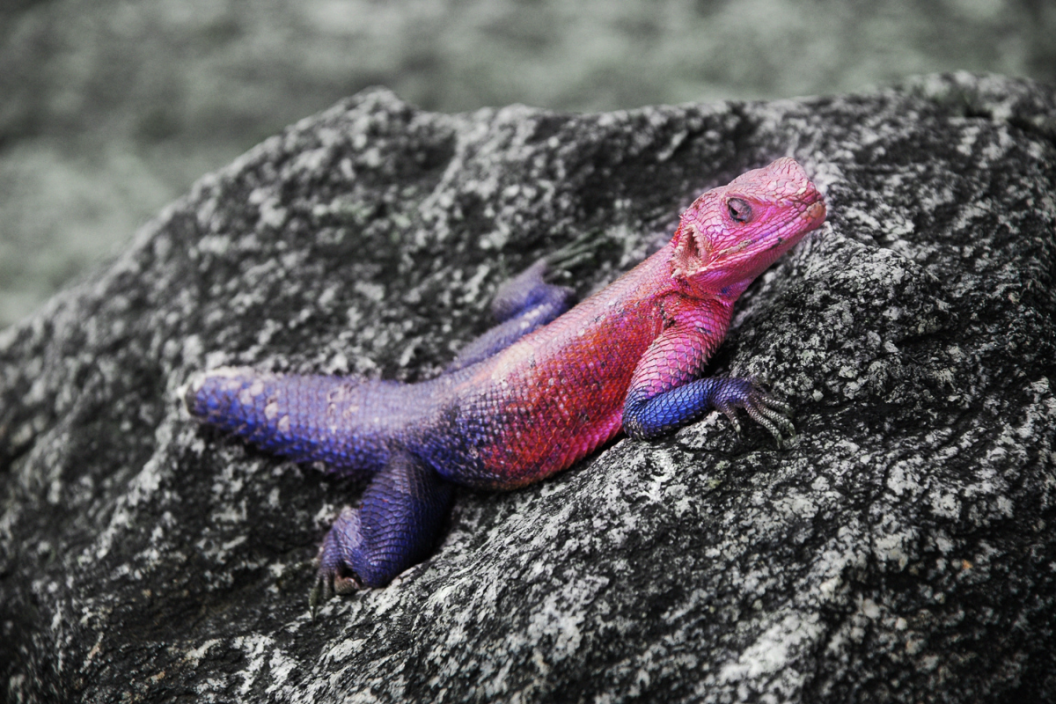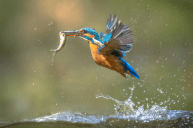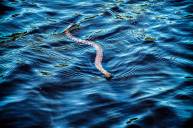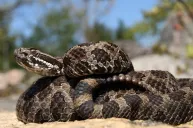You'll love these amazing purple animals more than blue and red combined!
These 11 amazing purple animals will make you wonder if they've been photoshopped. Did you know that the orchard dottyback and purple firefish are popular aquarium fish due to their bright colors? Or that the Eastern indigo is a purple snake native to North America? Or that the purple honeycreeper bird is a common sight in South America? Strangely colored animals are always trending on social media, but these animals will send you down the Wikipedia rabbit hole with their amazing wavelengths. But first, a commonly asked question:
Why Can't Mammals Be Purple?
Mammals can only produce brown-black pigment (the melanin that gives skin its tan) and reddish-yellow coloring. These are the dyes responsible for the restricted mammalian color palette in varying variations or absences. Surprisingly, most terrestrial vertebrates cannot produce blue or green pigments. The cool colors seen in birds (such as the Purple Martin and Violet-Backed Starling), amphibians, and other animals (such as purple beetles) are produced by microscopic structures in their feathers or skin.
1. Purple Honeycreeper
https://www.instagram.com/p/B8PZ1XjJp10
A common sight in South America's lowlands and foothills, purple honeycreepers are small, tanger-like purple birds. Males are a dark purple color with black wings, throats, and heads. The females are different, with a mostly green body, brown face, and blue mustache.
2. Purple Ocean Snail
https://www.instagram.com/p/B8CbD_qhk72/
The Violet Sea Snail (Janthina) is a sea creature with a lilac's delicate shell on the top and dark purple on the bottom. It can grow up to 1.4 inches long. It spends its entire life suspended from a raft of mucous bubbles filled with steam, which the snail produces and carefully preserves. The Janthina is pulled by the wind or the ocean waves in its tiny raft of bubbles.
3. Purple Emperor Butterfly
https://www.instagram.com/p/CCHC_8mHQ4Y/
Next on this list of purple animals, this beautiful butterfly lives in central and southern England. It lives in treetops and feeds on tree sap and honeydew. Adults are incredibly elusive, and the species experienced a sharp decline during the 20th century, but their numbers have increased in some areas in some areas of extensive woods.
4. Ochre Sea Star
https://www.instagram.com/p/CDeawbNFzBR/
This purple starfish is considered to be a keystone species because they have a significant impact on habitats. They are also excellent predictors of the general health of intertidal areas. Scientists are especially concerned about the species' rapid succumbing to sea star wasting syndrome. The precise causes of the disease are unclear, but climate change may be to blame.
5. Freshwater Purple Crab
https://www.instagram.com/p/YYAOLISIfh/
Scientists aren't sure why this recently discovered species of freshwater crab is so brightly colored, but they suspect it helps them recognize and remember each other. The alpha males turn red, while females and beta males turn purple.
6. Purple Nudibranch
https://www.instagram.com/p/BGILQ7tqgmD/
Nudibranchs are sea slugs. They are also known as Apolegma Sea Slugs. They move very slowly and can either float or be pushed along by muscle contractions or millions of tiny hairs on the bottom of their fleshy "foot." Sea slugs are hermaphrodites, and as they lay their eggs they produce a ribbon pattern in the sea.
7. Violet Crowned Woodnymph
https://www.instagram.com/p/B-U0FkLgmd9/
The Violet-crowned Woodnymph is a common hummingbird in central and south America. The male has a violet purple upper back, belly, shoulders, head, and a green throat, lower back, and breast. Females have a light green top and a dull green underside, with a grey throat and breast.
8. Indian Purple Frog
https://www.instagram.com/p/CKYDUAWh7UC/
This purple frog is an amphibian only found in India's Western Ghats. Its scientific name is Nasikabatrachus sahyadrensis, and it is one of only two species in the Nasikabatrachidae genus. While it has a variety of local names, the purple frog was only formally described in 2003. It breeds in very unique locations and is vulnerable to habitat loss and alteration. They are consumed by the locals, who often use them for medicinal purposes. In certain countries, children wear an amulet made from a frog because it is thought to reduce their fear of hurricanes.
9. Orchid Dottyback
https://www.instagram.com/p/CID3JUdpm5I/
The Orchid Dottyback is a purple fish that can be housed in a coral aquarium. The Red Sea is home to wild Orchid Dottybacks. They live in colonies along ledges and will dart in and out to prey on moving zooplankton. It can chase smaller fish on occasion, but it will protect its hiding places from intruders. It preys on predators such as tiny mantis shrimp and bristle worms, making it an excellent choice for a reef aquarium.
10. Eastern Indigo Snake
https://www.instagram.com/p/CLHNIBmLIc5/
The Eastern indigo snake is a non-venomous purple snake native to the eastern part of North America. Its chin, cheeks, and throat are primarily red or orange, but they may also be white or black. While adults have keels (ridges) on the front of some of their scales, most indigo snakes have smooth scales. The Eastern indigo snake's diet consists mainly of small rodents, birds, toads, frogs, turtles, newts, lizards, and small alligators.
11. The Purple Firefish
https://www.instagram.com/p/CGb8LfIpS5y/
The Purple Firefish (also known as the Flame Firefish, Decorated Firefish, Decorated Dartfish, or Purple Dartfish) was found in the Indo-West Pacific Ocean in 1973. The body base is a vibrant mix of yellow, white, and deep purple shades that begin at the head and end with maroon-tipped fins. If not fed a vitamin-rich diet, the vivid coloring will disappear.
Share your favorite purple animal on the Wide Open Pets Facebook page!




